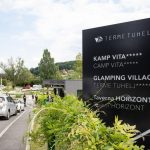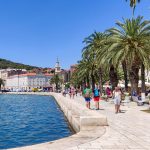As SibenikIN writes on the 12th of October, 2019, the popular Kornati National Park (NP Kornati) is undergoing research this weekend to identify the sources of waste pollution in the area of that particular national park. Based on the results of the research, an attempt will be made to determine the proportion of waste that comes into the Kornati area carried by the sea’s currents and waste generated in the area of the park itself.
The research, which has been continuing over the weekend, started back in October 2017. As stated, based on the results of the research, measures will be defined to reduce the amount of waste generated in the park area, all with the aim of preserving and protecting the extremely valuable Kornati submarine areas.
The research is being carried out in cooperation with the Society for Underwater Sports – DPS Zagreb, and is being led by Ph.D. Martina Markov.
The exceptional biodiversity of Kornati’s submarine is one of the reasons why part of the Kornati archipelago was declared a national park back in 1980. To date, more than 1,300 plant and animal species have been recorded in the Kornati submarine, including 366 types of algae, 3 sea flowers, 81 sponge species, 78 sea urchin species, 17 starfish species, 71 coral species, 145 snail species, 59 shellfish species, 77 crustacean species and 188 species of fish. With each new survey, the list is enriched with yet more, newly discovered species.
The greater part of the coastal zone is inhabited by the beautiful posidonia marine flowering plants, whose habitats are primarily NATURA 2000 habitats. The submarine cliffs there are characterised by coralligen – a habitat composed of red algae. Coralligen is home for an extremely large variety of species that are suitable for reduced light conditions – such as sponges, corals, and red and brown algae.
In the wider area of the Kornati National Park, which includes the Žut-Sit group of islands and the Murter area, 147 different species of bottlenose dolphins have been recorded so far, and often sea turtles – such as loggerhead turtles – which are strictly protected animals.
Make sure to follow our dedicated lifestyle page for much more. If you’re interested in both official and unofficial ways Croatia works to protect its environment, give Total Eco Croatia a follow.








